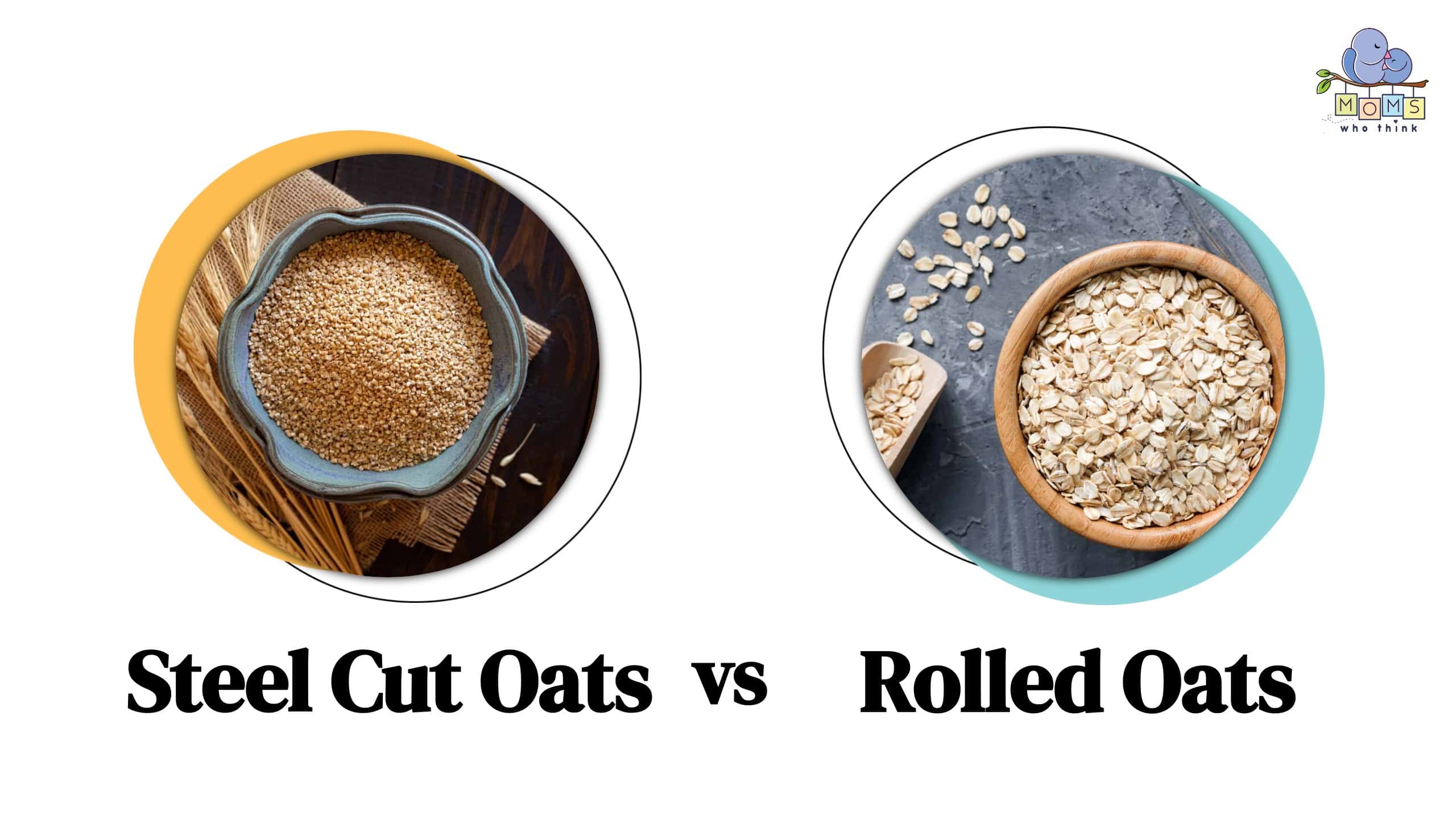Steel-cut oats are minimally processed, which is what gives them that distinctive nutty flavor and ultra-chewy texture. Rolled oats are intentionally processed, allowing for a smoother, softer texture. But what are the other key differences between these two oat options, and can you substitute one for the other? Let’s look into it!
Steel-Cut vs. Rolled Oats: 6 Key Differences
| Steel-Cut Oats | Rolled Oats | |
|---|---|---|
| Texture | Coarse and chewy and retain their shape | Smooth and tender |
| Processing | Minimal; simple chopping to retain the original texture | Steamed and flattened |
| Nutritional Content | 150 – 170 calories per ¼ cup (dry) | 190 calories per ½ cup (dry) |
| Cooking Style | Customizable with a longer cooking time | Customizable with a quicker cooking time |
| Health Benefits | Low glycemic index, ideal when managing blood sugar | A slightly bit higher glycemic index than steel-cut oats |
| Flavor | Nutty, earthy, and hearty | Mild and creamy |
Steel-Cut vs. Rolled Oats: Texture
If you’re going for a heartier bite, you’ll find that steel-cut oats deliver that texture that satisfies your preferences. It has a nice texture to it because it retains most of its shape through processing. When you see it dry, you can see that it’s only been partially chopped and as you cook it, you can determine the exact texture you prefer. With rolled oats, you get a smoother product upfront when dry and as you’re cooking it, it becomes a lot softer and more tender. With rolled oats, you can also achieve the desired texture, but you have to be careful not to overcook it, as this can lead to more of a mushy texture.
Steel-Cut vs. Rolled Oats: Processing
Both steel-cut and rolled oats come from the same grain but their processing is what makes them different. With steel-cut oats, the processing is minimal, and the name says it all. A steel mill roughly chops through the whole oats, leaving them with their original texture. Rolled oats have a more intentional processing that includes steaming and flattening the oats. You’ll see that they’re not as rough when dry and that they cook more quickly as well.
Steel-Cut vs. Rolled Oats: Nutritional Content
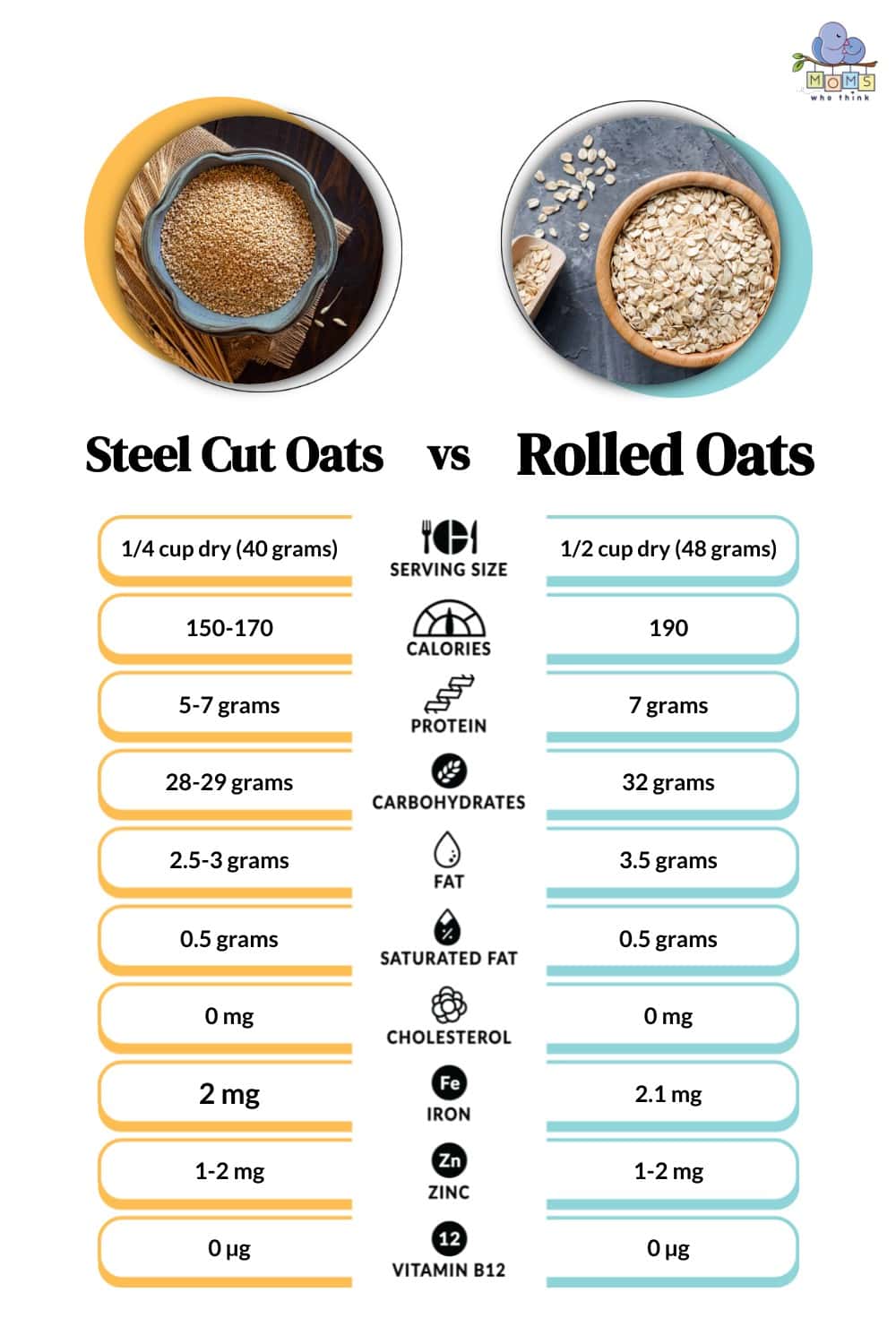
If you are preparing 1/4 cup of dry steel-cut oats, you can expect the caloric content to be between 150 to 170 cal. You could also expect about five to seven grams of protein and 28 to 29 grams of carbohydrates. There are between 2.5 and three grams of fat and 0.5 grams of saturated fat. This amount of steel-cut oatmeal also contains two milligrams (mg) of iron and one to two mg of zinc. Keep in mind that the amount of steel-cut oats you use along with any other toppings is going to affect the nutritional content of your meal.
If you prepare a 1/2 cup of dry rolled oats, you can expect the calories to be at about 190. Additionally, you can expect seven grams of protein, 32 grams of carbohydrates, 3.5 grams of fat, and 0.5 grams of saturated fat. These rolled oats would also contain 2.1 mg of iron and between one and two mg of zinc. Like with the steel-cut oats, these rolled oats will also have a different nutritional content depending on any other ingredients you incorporate to make them your own.
Steel-Cut vs. Rolled Oats: Cooking Style
Since steel-cut oats have a rougher texture, they do take a bit longer to prepare. Typically, it can be anywhere from 20 to 30 minutes, depending on the type of texture you prefer. You can change their flavor by incorporating your preferred toppings. With rolled oats, you have a quicker cooking time, and you can also customize your recipe to include additional ingredients like fruits or nut butter.
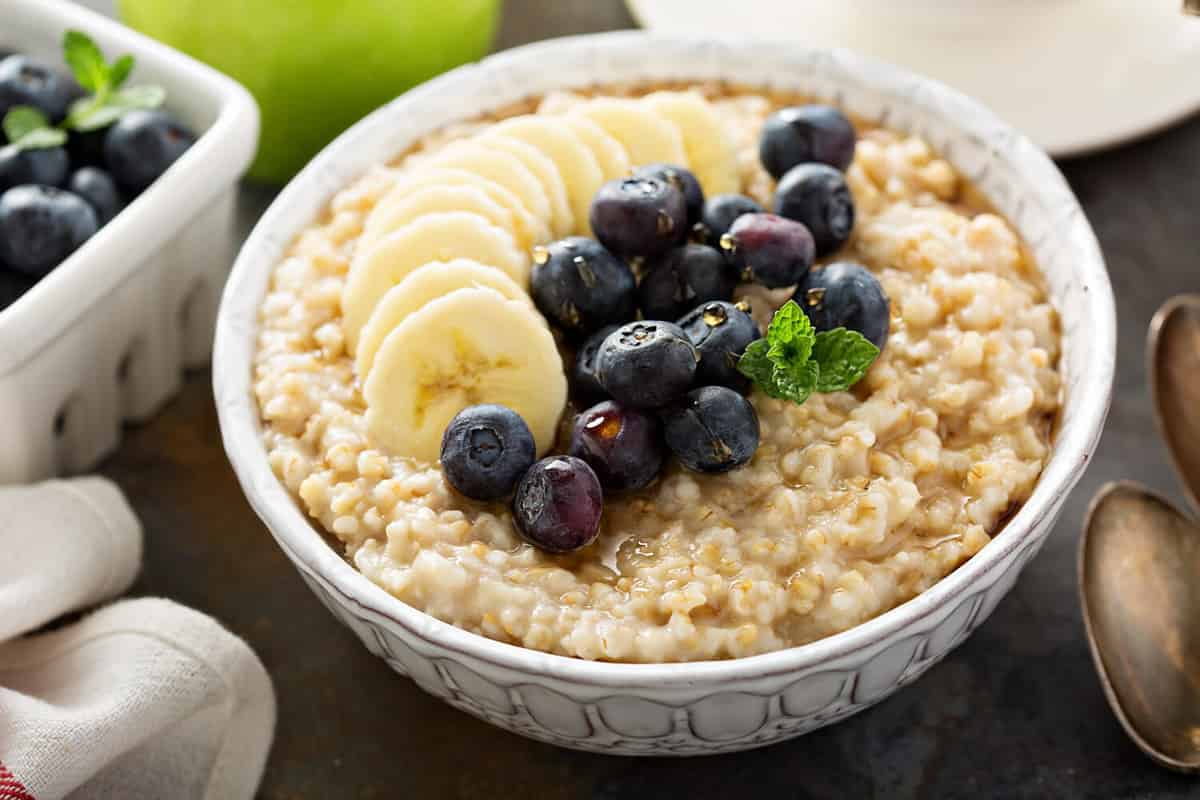
Isn't all oatmeal the same? Not exactly. The flavor and texture differ between steel-cut and rolled oats.
©Elena Veselova/Shutterstock.com
Steel-Cut vs. Rolled Oats: Health Benefits
Both steel-cut oats and rolled oats have a low glycemic index, which is helpful when you are working to manage your blood sugar. If you were to choose between the two, steel-cut oats have a slightly lower glycemic index than their counterpart, rolled oats. Both steel-cut oats and rolled oats offer several health benefits because they contain antioxidants, vitamins, and minerals that your body needs. For instance, oats can help with lowering cholesterol because they contain fiber. This can also help with digestion.
Those looking to lose weight or control type 2 diabetes can also lean on steel-cut and rolled oats as a good source of nutrients that help you feel full. When you feel full, you’re less likely to overeat. Over time, those who have type 2 diabetes can help to reduce their high blood sugar by incorporating oats into their diet plan. Oats are also a great option if you have celiac disease because they don’t contain any gluten. Just be sure to double-check product labels to ensure there’s no cross-contamination.
Steel-Cut vs. Rolled Oats: Flavor
Since steel-cut oats are minimally processed, you can expect the flavor to be more robust. You can describe it as kind of nutty and earthy and when you bite into it, you’re definitely getting a hearty texture. With rolled oats, you get a much milder flavor and a creamier and softer consistency. This is just if you eat them alone. However, the type of milk you use can affect the flavor as well as any other ingredients you incorporate, whether they be fruity like bananas and berries, or spicy like cinnamon.
Steel-Cut Oats Recipe
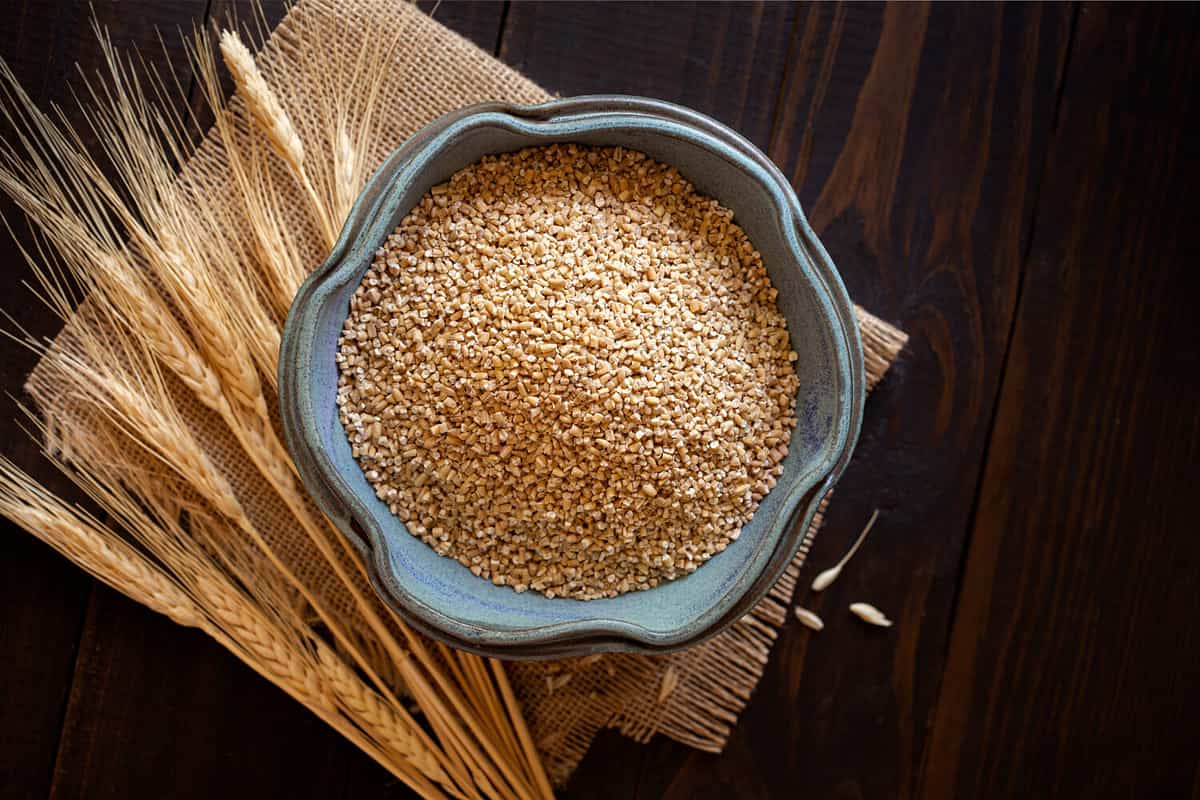
You can expect steel-cut oats to take longer to cook due to their courser texture when dry.
©Linda Hughes Photography/Shutterstock.com
To achieve the perfect, never-mushy steel-cut oats, you need a tried-and-true recipe. With steel-cut oats, you want to consider the ritual to achieve the yummiest bowl. It’s not just about throwing things in the microwave and dashing toward the door. So, you’ll want to cook these using your stovetop. Here are the ingredients you need:
- Milk of your choice (1 cup)
- Water (2 ½ cups)
- Steel-cut oats (1 cup)
- Salt, kosher (1/4 teaspoon)
- Your choice of toppings (fresh fruit, cinnamon, chocolate, nuts, seeds, dried fruit, etc.)
You do have a choice in how thick your steel-cut oats come out. But, on average, you need a 4:1 ratio of liquid to oats. By mixing your choice of milk with water, you get an ultra-creamy result. Alright, grab your saucepan and add your base ingredients: liquids, steel-cut oats, and salt. Bring them to a boil.
Right after reaching a boil, reduce to a simmer and let the magic work. It takes about 20 minutes. You don’t have to stand there and stare at your oats, just visit them once or twice to make sure they’re not sticking to the bottom of your saucepan. You get to choose when the texture is just right for your preferences. Then, add your favorite toppings and enjoy!
Rolled Oats Recipe
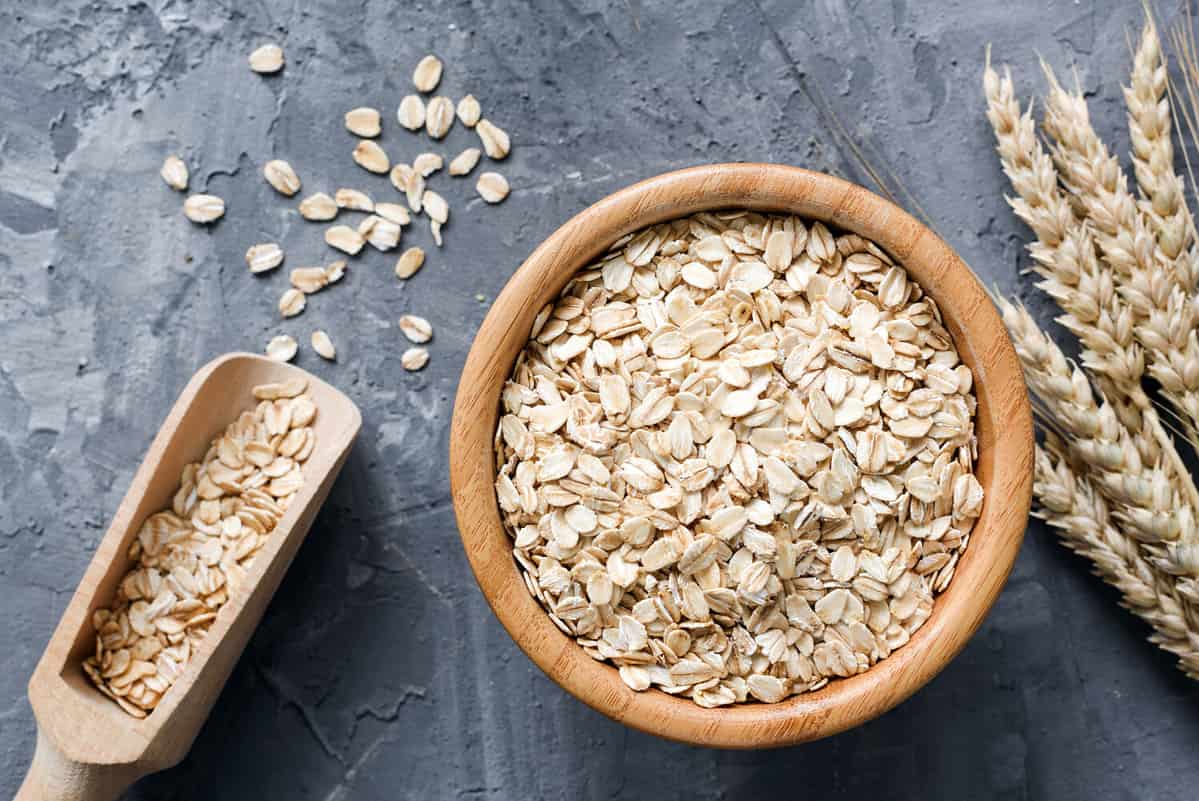
Rolled oats are steamed and later flattened, which is why they have the texture they do when dry.
©Vladislav Noseek/Shutterstock.com
Like with the steel-cut recipe, it’s customizability that allows you to turn a rolled oats recipe into your own. Here are the ingredients you need:
- Milk of your choice (1/2 cup)
- Rolled oats (1/2 cup)
- Salt, kosher (just a pinch!)
- Water (1/2 cup)
- Your choice of toppings (Diced apples and cinnamon, banana and peanut butter, etc.)
Use a saucepan to combine your primary ingredients, including milk, water, rolled oats, and a pinch of salt. Bring them to a boil then reduce to a simmer. Unlike with steel-cut oats, you don’t need to wait 20+ minutes. It should only take about five minutes before you can serve and add your favorite toppings.
Recipe Card
Now that you have the basics ingredients down, let's try a delicious yet healthy steel-cut oats that your family will request again and again!
Print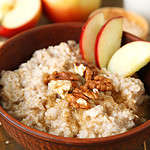
Ginger-Pear Steel-Cut Oatmeal
- Total Time: 40 minutes
- Yield: 4 servings
Ingredients
- 1 cup steel-cut oats
- 3 cups water
- 1 1/2 cups almond milk (or any milk of your choice)
- 2 ripe pears, peeled, cored, and diced
- 2 Tablespoons honey or maple syrup
- 1 Tablespoon fresh ginger, grated
- 1/2 teaspoon ground cinnamon
- 1/4 teaspoon salt
- Chopped nuts (such as almonds or walnuts) for garnish
- Greek yogurt for topping (optional)
Instructions
- In a medium-sized saucepan, bring water to a boil. Add steel-cut oats, reduce heat to low, and simmer for about 20-25 minutes, stirring occasionally.
- While the oats are cooking, in a separate pan, sauté the diced pears with honey or maple syrup, grated ginger, ground cinnamon, and a pinch of salt over medium heat until the pears are tender, about 5-7 minutes.
- Once the oats are cooked and have reached your desired consistency, stir in the almond milk and continue to cook for an additional 5 minutes, or until creamy.
- Fold in the sautéed ginger-pear mixture into the oats, reserving some for topping.
- Remove from heat and let it sit for a couple of minutes to thicken.
- Spoon the oatmeal into bowls and top with the remaining ginger-pear mixture, chopped nuts, and a dollop of Greek yogurt if desired.
Nutrition
- Calories: 300
- Sugar: 20 g
- Sodium: 150 mg
- Fat: 6 g
- Carbohydrates: 55 g
- Fiber: 8 g
- Protein: 8 g
